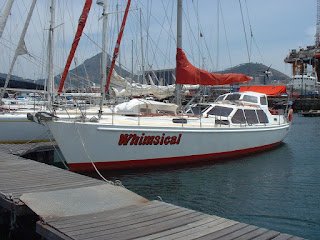A few owners of our metal boats have beached them on rocks unintentionally during hurricanes, storms or lapses in proper navigation. Every one of them survived without structural damage severe enough to have endangered them.
I once very embarrassingly bounced the 12mm plywood hull of my Didi 38 "Black Cat" off a big rock that was being used as a turn mark for a day race in a big regatta in Cape Town. I was not paying enough attention when I should have been and we were pushed onto the rock by the crew of another boat to which we got too close. The surge sucked us against the rock, which we hit hard enough to feel like we had been holed, then we were stuck there by the surge repeatedly pulling us in. It got her photo into both national sailing magazines and the newspaper. She even starred in a video on Finish national television, showing us using the spinnaker pole to push ourselves off the rock. In my rather weak defence I have to say that we managed to extricate ourselves without starting the motor and we did do our penalty turns for hitting a mark of the course.
My ego was just slightly dented by that episode but "Black Cat" proved the strength of plywood/epoxy by not even showing a scratch from the big rock. Despite that, I would not be tempted to put her up against ice or a prolonged beating by waves against a rocky shore. If I was planning to sail to high latitudes I would undoubtedly choose a metal boat.
Professional builders have produced excellent examples of our steel designs. They are, after all, being paid for their expertise and their ability to produce a quality product. But I have also seen some really beautifully built steel boats built to my designs by amateurs, to a very high standard. People with fairly basic skills at the start of a project learn as they go, through experience and additional education where needed, ending up suitably skilled when they get to the important parts of the project. By the time that they launch their boat they have absorbed a whole host of new skills and many go on to become professional builders.
 | |
| Dennis Wagner made a beautiful job of his Dix 43 Pilot. |
 |
| This Dix 38 hull was built by Frank Menton and finished by Alan Reynolds. |
 | |
| Hout Bay 33 built by Sergey Federov in Saint Petersburg, Russia. |
 |
| Hout Bay 33 built by Francisco Rego in Portugal |
Go to http://dixdesign.com to see our full range of designs. We have many varied concepts from which you can choose.





